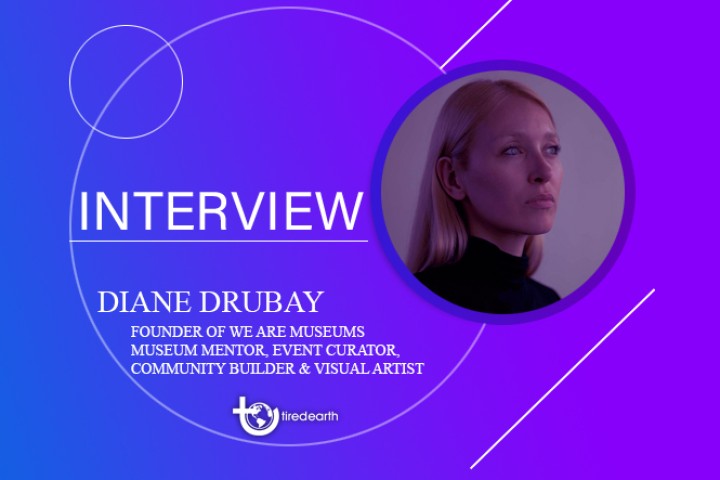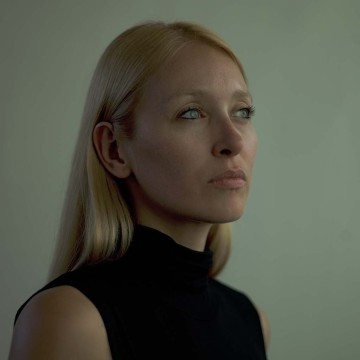Tired Earth: An Interview with Diane Drubay, Founder of We Are Museums

This interview was conducted by Selva Ozelli
What was the idea/inspiration behind creating We are Museums?
What if the museum community behaved like a forest? Where each museum has its own place and function, its own role and identity, its own rhythm and objectives, but all the while being in symbiosis with its neighbors, its colleagues near and far. What if museums were part of a healthy ecosystem that does not waste itself but knows how to make itself useful and necessary, but also knows how to withdraw and make room for others when necessary? When I thought of We Are Museums, I imagined a diverse group of people, working in or for a museum or just being inspired by museums, coming together regularly to exchange and contribute to an open collection of shared intelligence. I envisioned a place of constant reflection on the future of museums, a space for critical thinking and caring.
Today We Are Museums is a large international community of museum changemakers. It takes many forms, but always aims to guide museums through change so that they remain relevant for future generations.
Tell us about your organization's initiatives concerning getting museums involved in sustainability, climate change education, action, research and partnerships?
2019 was a pivotal year for We Are Museums as we realized that organizing international conferences was not sustainable. We were facing a need for stronger, more continuous, more diverse support. We were facing strong formats in the short term but weak in the long term. If we want to exist in the future, we have to think about our impact in the long term, and what traces we leave. So we organized the last We Are Museums conference in Katowice, 6 months after the COP21 and dedicated our program to the engagement of museums in climate action. 3 months after this conference, we launched our new program 'Museums Facing Extinction' in collaboration with EIT Climate-KIC. This multi-year program began with a review of the practices and challenges of the museum sector in addressing environmental crises. This first workshop resulted in the production of a handbook and online video content. A second major step was to guide 16 museum professionals in Lithuania towards climate actions (read more about this program here). It is through 7 months of accompaniment that we supported the creation of fabulous projects inspiring new practices and new projects in Lithuania. Among them, we can mention a facebook group gathering museum professionals in Lithuania ready to act for the climate, the creation of a guide for the ecological transition of Lithuanian museums, a conference to share local good practices, interviews of scientists telling the climate crisis through the collections of fine arts museums, awareness workshops on listening to the forest and screenings of climate engaged movies. As for every program created by We Are Museums, we also re-use all our content and share it broadly. For instance, this second part of 'Museums Facing Extinction' led to the production of our 'Museums on the Climate Journey Handbook' and the 'Systems Thinking Handbook', and more is currently being produced.
We Are Museums is also an active member of Museums For Future, the museum branch of Fridays For Future, and also of the Climate Heritage Network, to name just two.
What partnerships does We are Museums have? Does it collaborate with museums, the UN?
We Are Museums runs projects on specific topics and aims to reply to precise questions or goals. Each project is run in collaboration with at least one partner. Of course, we have long-term "friends" with whom we remain in constant contact to exchange and support each other over the years. Among those friends, we can list Museums For Future, Ki Culture, Les Augures, Vastari, COMCOL, NEMO, Climate Heritage Network, Europeana, Coalition of Museums for Climate Justice, Biomimicry Academy Berlin, just to name a few.
How can people reach We are Museums? Does it have a digital platform?
Seeing the compelling need to connect and receive support on a daily basis, we launched our online community in March 2020. It is now possible for all professionals, researchers, or students who work for or with museums to join us online at https://community.wearemuseums.com/ We are also very present on social networks, providing a daily watch on the subjects that will make the museums of tomorrow.
What are your thoughts on the digitization of the art market, the art market embracing the NFT paradigm?
I see blockchain and NFTs as a fabulous opportunity for museums to address some of the systemic issues that are holding them back today.
It took three or four years for the values of blockchain to match those of museums, but we are finally there. Today, the Tezos blockchain promotes sustainability by avoiding huge environmental and financial costs. We are facing a technology that has a light carbon footprint, but also remains accessible to different audiences and geographies, enhances the southern hemisphere and requires sharing of tools created in open content.
Now that the values are aligned, museums can see in the blockchain fabulous opportunities. Through blockchain, the museum can activate and engage communities with tracking and rewards. It can decentralize projects and decisions to be part of a movement and no longer be at its center. Art patronage can become fully democratic and visitors could attribute value to certain works or projects, through micro-patronage. Fundraising and merchandising can be reinvented with NFTs of physical artworks to be exhibited in the Metaverse. Museum ubiquity can finally be imagined to provide new museum experiences and reach out to new audiences. These are just a few examples, but the list is long and most use cases are still to be invented.
Anything else you might want to add concerning your thoughts on museums and art's role in society's change, for the future of our Planet? And your thoughts on United Nations declaring 2021 the "International Year of Creative Economy for Sustainable Development"?
I believe that museums should act and be seen as architects of change in respect of people and the Planet. Of course, we need to acknowledge that before nudging change, change should happen without yourself and this is the biggest challenge of museums today. Being able to adapt to the constantly changing social and environmental conditions while staying relevant for the future generations is complex and difficult. But we are not alone and it is by connecting to each other, joining forces, sharing and supporting that complexity will unpack into a fabulous exciting adventure. After all, it is just a question of values. If our values aim for circularity and sustainability, our institutions will reflect it, step by step.
What is a Campaign like #MASKUARY's role in increasing public awareness in dealing with plastic pollution caused by PPE?
As with any complex situation, solutions are not linear or unique. Raising awareness on the environmental crisis and nudging climate actions should happen at different levels, from different people, culture and perspectives. If we all agree on working towards planet care, behaviors will start changing and systems will shift. A campaign like #MASKUARY shares one langage, one chapter of the same global story which we should all start telling.

